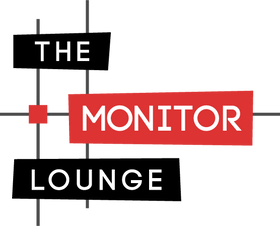Touchscreen displays have transformed how we deliver presentations, showcase items in the store, make sales, and play games. But just like any display, it's an investment, and to make sure you're making the best choice based on your needs, you have to understand the pros and cons.
This blog dives deeper into the science behind touchscreens, the pros and cons you should consider before making your purchase, and if you decide a touchscreen display is the best choice for you, we’ll showcase the options we have available at The Monitor Lounge.
How Do Touchscreen Displays Work?
Believe it or not, touchscreens have been around for a while. The first touchscreen debuted in 1965 and has experienced incredible transformations ever since. As a result, it seems like touchscreens are all around us, from phones, tablets, displays, gas stations pumps, and grocery stores self-checkout lines.
Touchscreens are now part of our everyday lives, but we often don’t think about how these screens work. There are two main types of touchscreens: capacitive touchscreens and resistive touchscreens.
Capacitive Touchscreens
Capacitive touchscreens are the kind of touchscreens that many of us are the most familiar with, as they are used for phones, tablets, and laptops.
First, the main component for capacitive touchscreens to work appropriately is electricity. The glass screen is coated with a thin layer of indium tin oxide, which is transparent and conducts electricity. This layer connects to a low electricity voltage from the device, so there is a small tiny electric current constantly on the screen.
When your finger touches the screen, a small amount of that already low electric current goes directly to your finger, causing the area you touched to lose an electric charge. That is how the device knows which point you touched.
This explains why touchscreens don't work when you wear gloves. Gloves are made of an insulator material, so that is why if you want to use any kind of touchscreen while wearing gloves, you need to find a pair with electrically conducting fingertips.
Capacitive touchscreens usually have a bright and clear display, allowing us to experience higher-quality images. However, they are usually more sensitive as well.
Resistive Touchscreens
The second kind of touchscreen is the resistive touchscreen. As you may guess from the name, this technology works with resistance to touch.
These screens are made from glass or a hard layer of plastic covered by a resistive metallic layer that also conducts electricity. Spacers separate the layer of glass or plastic and the metallic layer. So when you touch that top glass or plastic layer, it creates an electric charge with the second metallic layer, which cues the device to respond.
These touchscreens are not as bright or clear as capacitive touchscreens because that top layer comprises thick blue and yellow colored layers. As a result, you're more likely to see resistive touchscreens used for ATMs, checkout lines at the grocery store, and self-check-in stations at airline terminals.
Usually, capacitive touchscreens offer more flexibility. For example, these touchscreens are great if you need to use two fingers to zoom in on your phone. However, if you try to do that with a resistive touchscreen, it will get confused and not know what action to follow.
The Pros and Cons of Touchscreen Displays
Touchscreens are not just for phones anymore. Investing in a touchscreen display can help you wow your audience for your next presentation or help your customers browse your selections in-store. We'll cover some of the most common pros and cons of touchscreen displays.
Pros of Touchscreen Displays
1. Ease of use
It's pretty easy to use a touchscreen display. A person doesn't need to control a mouse or any other type of controller. Instead, they can simply tap and operate a touchscreen display. This is also an excellent solution for those who have impairments and can't work with a mouse or keyboard.
2. Saves space
A touchscreen display can help you save space because you don't need any other external devices, such as a mouse or keyboard.
3. Fast and efficient
Touchscreen displays are a great solution to offer customers a fast and efficient way of browsing menus and selections.
4. Easy to clean
Since touchscreen displays have a glass surface, they are easy to clean with a window or safe multipurpose cleaner.
Cons of Touchscreen Displays
1. Proximity to the display
If someone needs to touch the display, it only makes sense that they would have to be pretty close to it. So depending on how you plan to use the display and where you want to place it, it could cause issues if people can't reach it easily.
2. Precision of touching
Depending on what kind of touchscreen display you purchase, the accuracy and precision of someone's touch may not be on point, especially if the icons are tiny. You may have to also invest in a Stylus to help people navigate the touchscreen display.
3. Spots!
While touchscreen displays are easy to clean, you'll constantly be fighting the battle against streaks and spots left behind my moist fingers.
4. Visually impaired
While a touchscreen display is an excellent option for those who have impairments that prevent them from using a mouse or keyboard, a touchscreen display is difficult or impossible to operate for the visually impaired.
Touchscreen Displays Available with The Monitor Lounge
After weighing the pros and cons of touchscreen displays, if you're ready to invest, we have the perfect selection of iiyama touchscreen displays for you to choose from!
22” Iiyama ProLight P-Cap 10pt IPS Touchscreen Display with Stand
This touchscreen display is equipped with projective capacitive 10-point touch technology, delivering accurate touch response. It also comes with a flexible stand so you can adjust to the most comfortable angle.
- Resolution: 1920x1080
- Response time: 7ms
- Horizontal sync: 83Hz
This touchscreen display is an excellent solution if you're looking for interactive signage, a point-of-sale screen, or a way to deliver interactive presentations.
24” or 27” ProLite 10pt Touchscreen Display with Integrated Webcam
This ProLight touchscreen display is also equipped with projective capacitive 10-point touch technology and is available in either 24” or 27”. A bonus is that both are equipped with an integrated webcam for more convenience.
- Resolution: 1920x1080
- Response time: 6ms
- Horizontal sync: 80Hz
This is an ideal touchscreen display if you’re looking for interactive digital signage or presentations, as well as a new way to level up your gaming experience.
You can purchase any of these touchscreen displays, as well as browse our entire selection of handpicked Iiyama displays at The Monitor Lounge. When you buy from us, you're guaranteed fast and safe delivery and top-notch customer support if you have any questions.

